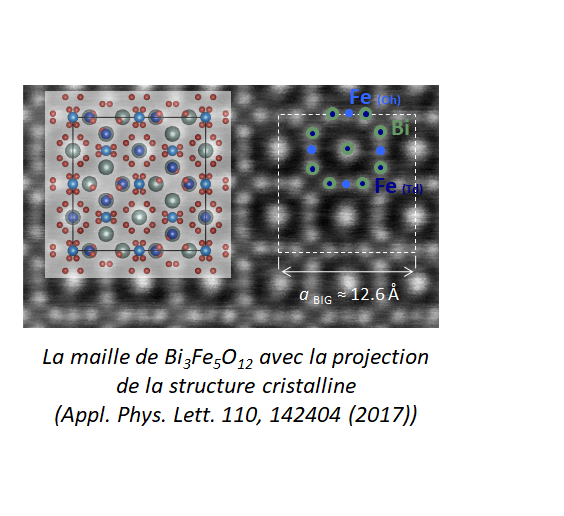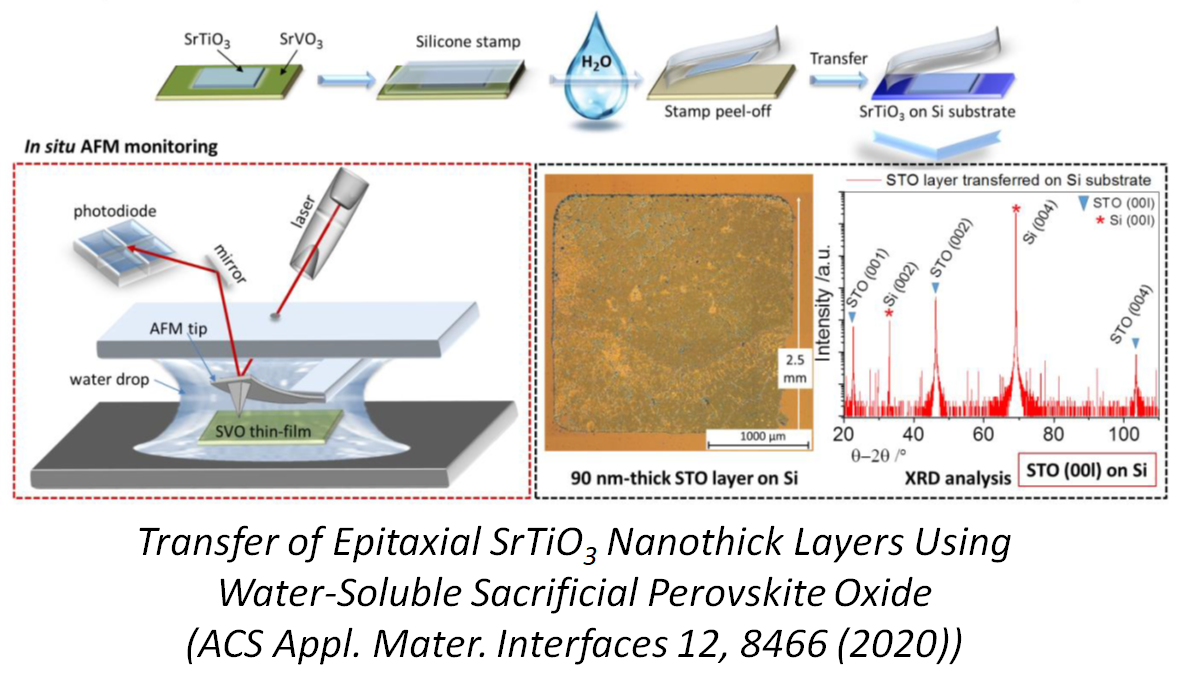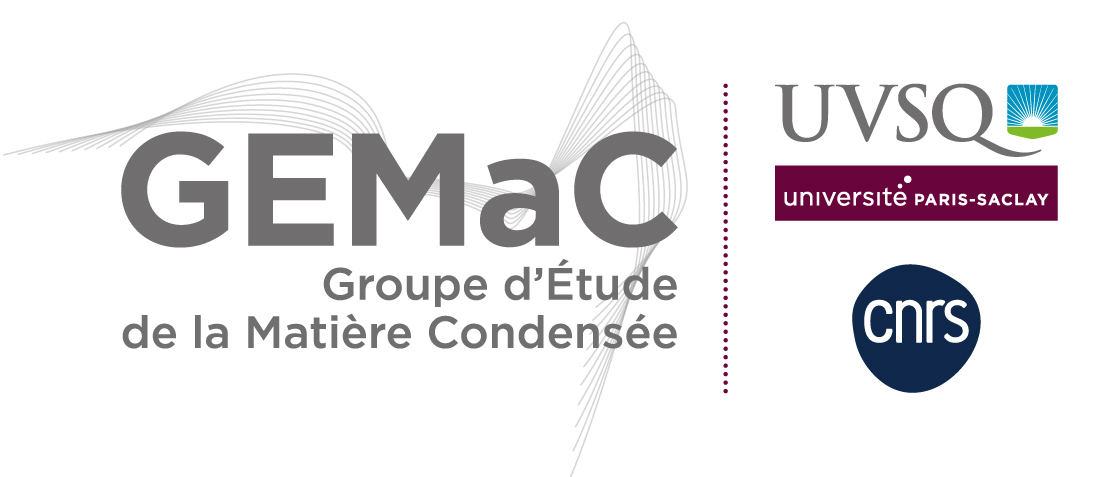The core of the team's activities is the engineering of thin films and heterostructures of complex oxides and investigation of fundamental aspects of their physics, keeping in mind the potential applications of these materials. Within the team, we are developing methodologies for the growth of multi-cationic oxides by
pulsed laser deposition (PLD) using the team's expertise in materials science. Indeed, we have designed

our own growth reactors and use numerous in situ characterization experiments to control epitaxy in real time. Thanks to the fabrication of our own custom targets, we master the entire "chain" of material development: from binary oxide powders to epitaxial layers or heterostructures of high crystalline quality. The most studied oxide materials in our group are perovskites (nickelates, vanadates, titanates), magnetic garnets and iron-based oxides.
Our research focuses on understanding the fundamental phenomena of low dimensionality, the role of stress and doping. We study interactions between layers and properties at interfaces in order to understand and control physical properties of the material.
One of the objectives of our work is to find ways to make these materials multifunctional and usable in a new "all-oxide" electronics (Oxytronics). With the aim of transferring technology to industry - a major challenge in the field of complex oxides - we have combined our expertise in oxides with that of the GEMaC
NSP team in chemistry growth methods to jointly launch the growth of perovskite oxide materials (SrTiO3 and BiFeO3) on large-area (2-inch) silicon by
ALD (Atomic Layer Deposition).

Another part of the activity which aims to make oxides compatible with silicon-based electronics concerns the development of "low cost" substrates for the growth of perovskite oxides. This involves either growth on perovskite nanosheets (
ISCR Rennes collaboration) or on polycrystalline substrates (
CRISMAT Caen collaboration). Recently, we have developed a 3rd way for transferring oxides to other media via a collaboration between the FOX and
EPI teams (ILV Versailles). We aim to transfer a perovskite oxide material of interest using another perovskite material (SrVO3) as a sacrificial layer that dissolves in water.






 our own growth reactors and use numerous in situ characterization experiments to control epitaxy in real time. Thanks to the fabrication of our own custom targets, we master the entire "chain" of material development: from binary oxide powders to epitaxial layers or heterostructures of high crystalline quality. The most studied oxide materials in our group are perovskites (nickelates, vanadates, titanates), magnetic garnets and iron-based oxides.
our own growth reactors and use numerous in situ characterization experiments to control epitaxy in real time. Thanks to the fabrication of our own custom targets, we master the entire "chain" of material development: from binary oxide powders to epitaxial layers or heterostructures of high crystalline quality. The most studied oxide materials in our group are perovskites (nickelates, vanadates, titanates), magnetic garnets and iron-based oxides. Another part of the activity which aims to make oxides compatible with silicon-based electronics concerns the development of "low cost" substrates for the growth of perovskite oxides. This involves either growth on perovskite nanosheets (
Another part of the activity which aims to make oxides compatible with silicon-based electronics concerns the development of "low cost" substrates for the growth of perovskite oxides. This involves either growth on perovskite nanosheets (